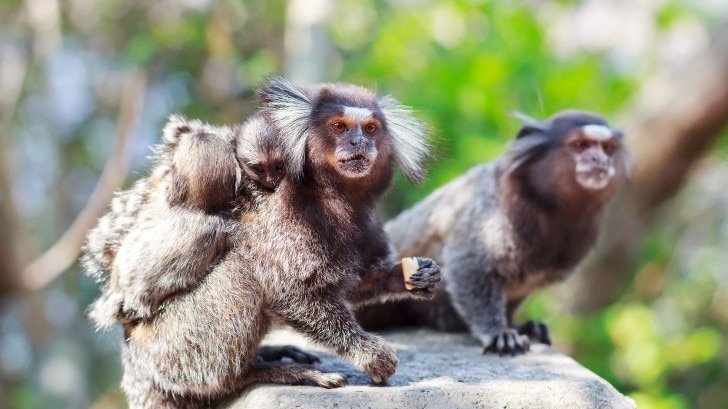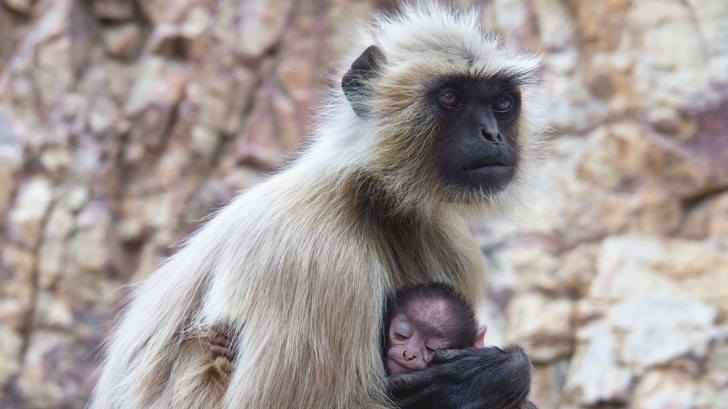BBC Earth newsletter
BBC Earth delivered direct to your inbox
Sign up to receive news, updates and exclusives from BBC Earth and related content from BBC Studios by email.
Animals
Female infanticide is found in nearly a third of mammal species. What is going on?
“Usually you start a lecture with a joke,” says anthropologist and primatologist Sarah Hrdy, “But there are no infanticide jokes. It’s just a no-no.”
To many it may seem shocking, but among mammals it is more common than you might think. A recent survey of 289 mammal species found evidence of female infanticide in nearly a third of them.
Sometimes, animals kill young members of their own social groups. Occasionally, females raising a brood decide to kill the offspring of another female in the group, for example.
Early in her career, Hrdy published ground-breaking work on infanticide in langurs, a subfamily of monkey species scattered across Asia. More than 40 years later, infanticide remains something of a taboo. While humans may be uncomfortable with killer mum jokes, even with regard to other species, perhaps we can at least better understand the fact that, yes, infanticide does happen. But why?
Hrdy, whose work in the 1970s was highly controversial at the time, says she is still sometimes “horrified” to return to the topic of infanticide. She gives the example of marmosets, tree-dwelling primates found in South America. Whereas humans think of pregnancy as a time when a woman’s hormones are priming her to respond positively to babies and increase the likelihood that she’ll bond with her own, the reality for marmosets can be very different.

“They’re pregnant, getting ready to give birth to a baby, and that is when they’re at their most infanticidal,” says Hrdy.
In 2007, a study described the killing of a one-month old marmoset, the daughter of the dominant female, by the second breeding female in the group. This female made the attack while she herself was pregnant. Later, she gave birth to twins and appeared to become the leader of the group.
While the marmoset appears chillingly cold-blooded to us, the move was clearly made out of a primal urge to secure the best possible future for her offspring. It’s generational politics in the animal kingdom. Think Queen Cersei in Game of Thrones, desperate to dispatch the children of her rival, Ned Stark, in order to help tighten her own family’s grip on power.
And “co-operative breeders”, in which parents must assist in the raising of offspring, may sometimes make particularly disturbing choices, says Hrdy. If they don’t feel that their new litter will be well enough looked after, they may commit infanticide in the hope of finding better brood-rearing circumstances in the future.
“Females can be just as competitive as males,” says Elise Huchard at the University of Montpellier. “They compete over access to resources that they need to raise their offspring.”
Huchard and Dieter Lukas at the University of Cambridge recently published a study of female infanticide in mammals. The work is yet to be peer-reviewed, but it has helped to document the prevalence of killer mums in mammalian societies. Of 289 species, 30% were found to have cases of infanticide.

Huchard says that killing another’s offspring is a – no pun intended – fact of life. Females will kill whenever they can assess clear benefits from doing so. The pair found examples in studies of lemurs, seals and sea lions, bears, cats, bats, mice and squirrels, among others. Infanticide was clearly not confined to any one group or habitat – but there were important links between many of the cases.
Three crucial factors that influenced how likely a female was to commit infanticide were:
When such pressures reach a threshold, mums seem primed to kill.
Hrdy is impressed with the work, though she questions why humans were not included. Hrdy has also studied infanticide in humans and points out that, in our society, mothers rely on particularly high levels of social support during the early stages of their child’s life. If that support isn’t there, human mothers may be more likely to neglect their children, even to the point of death.
Whether it is social support or access to enough food in a harsh environment, infanticide seems to be a dark but evolutionary trait. As counter-intuitive as it seems, then, in order to raise offspring appropriately, mothers may sometimes turn on their own young, or the young of others nearby.
“Survival of the fittest”. It’s a tough theory, but it’s clearly one that isn’t put on hold during motherhood, never mind our fluffy cultural conceptions of what motherhood is. Across nature, mothers seem acutely aware of the pressures of selection. If a neighbours’ offspring must die to improve the fortunes of one’s own, well, so be it.
Thankfully, most humans are not likely to support such a murderous position within our own species. But we should certainly realise that infanticide is not a freak phenomenon. Rather, it is something that has developed in a number of animal societies – and quite naturally, too.
This article was originally published on 10th April, 2019.